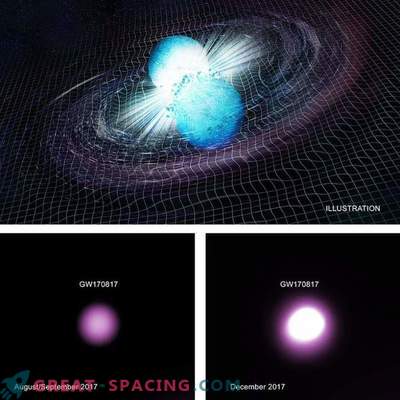
The HAWC Observatory is a detector designed to observe gamma rays emanating from astronomical objects, such as supernova remnants, quasars and rotating dense stars (pulsars). Located at an altitude of 13,500 above sea level near the volcano Sierra Negra (Mexico). The detector is represented by more than 300 tanks with water and a diameter of 24 feet. When particles hit water, they create a shock wave of blue color. Special cameras record color, allowing scientists to determine the origin of gamma rays
The night sky seems calm, but telescopes see a picture of explosions and collisions. Distant violent events hint at their own presence, spewing light and particles in all directions. When they “touch” the Earth, scientists are able to use them to better understand the unstable processes of deep space.
For the first time, researchers were able to detect high-energy light from the most distant regions of the unusual stellar system of the Milky Way. The source is a microquasar — a black hole that absorbs material from a nearby star and explodes two powerful jets. Observations suggest that the acceleration of electrons and collisions at the ends of the jets caused powerful gamma radiation. It is believed that further study will allow to detect more extreme events occurring in the centers of these distant objects. The data was obtained from the HAWC observatory, a detector for observing gamma radiation emanating from astronomical objects, such as supernova remnants, quasars, and pulsars. Now the team has studied one of the most famous microquasars SS 433, distant from us by 15,000 light years. Researchers observed about a dozen similar objects in the Milky Way, and only a couple of them released high-energy gamma rays.
By combining observations with multi-wave and multi-user information from other telescopes, we can improve our understanding of particle acceleration in SS 433 and its giant cousins — quasars. These are massive black holes that absorb material in galactic centers. They actively release the rays that can be observed throughout the universe. However, they are located far away. The most famous examples were found only because their streams were directed to the Earth.
Microquasar gamma rays move in a straight line. Entering the Earth collide with molecules in the atmosphere, creating new gamma rays of lower energy. Each new particle is broken down into a larger amount of material, creating a shower with particles. HAWC is located at an altitude of 13,500 feet above sea level near the volcano Sierra Negra (Mexico). This is an ideal location for detecting a fast particle beam. The detector is represented by more than 300 tanks with an input diameter of 24 feet each. When the particles hit the water, they move fast enough to form a shock wave of blue light, fixed by special cameras. The HAWC Observatory examined data for 1017 days and showed that the rays come from the ends of the microquasar jets, and not from the central part of the star system. This suggests that the electrons in the jets reach energies that are 1000 times higher than can be obtained using accelerators of terrestrial particles (a large hadron collider the size of a city). The electrons of the jets collide with low-energy microwave background radiation, which leads to the emission of gamma radiation. This new mechanism for generating high-energy gamma rays is different from what scientists had previously observed.
Until now, the instruments have failed to detect SS 433 in such radiation, but HAWC is designed to remain as sensitive as possible to this extreme part of the light spectrum. The detector is also endowed with a wide field of view, capable of covering the entire sky.











































